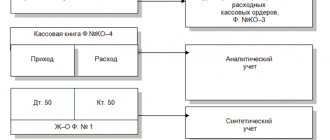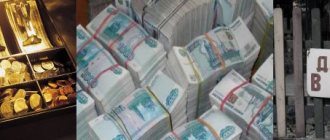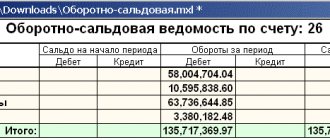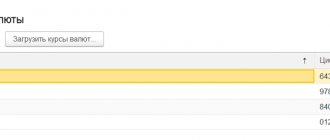If an organization works with cash, a certain percentage of errors is almost inevitable. Cash discrepancies are especially frequent in companies where the cash flow is very extensive and the persons responsible for it often change, for example, in supermarkets with a large number of cash registers, large shopping centers, etc.
Let's consider what the right thing to do in such cases is for the management of the organization, which threatens the cashier who does not keep track of part of the money, and we will also reveal the features of accounting for the shortage through accounting.
Values
The cash desk at an enterprise may contain cash, payment documents, securities and strict reporting forms. Payment documents include not only receipts, but also stamps (postal, bill and state duties), vouchers to sanatoriums, air tickets and other documents. Strict reporting forms include: receipts, certificates, diplomas, subscriptions, tickets, coupons, shipping documents, etc. The cashier bears financial responsibility for the preservation of monetary documents.
When the cashier is not to blame
The law stipulates certain circumstances that remove guilt and financial responsibility from the cashier. These include:
- a natural disaster as a result of which the cash register was damaged and funds were lost;
- another act of force majeure independent of the cashier (robbery, theft of funds during transportation or transfer to/from the bank).
In this case, the act of shortage is recorded, in addition to the usual emergency inventory procedure, also by an act of law enforcement agencies.
Inventory
The procedure for carrying out cash inventory is regulated by the “Procedure for maintaining the cash register No. 40”, approved by the Board of Directors of the Central Bank of the Russian Federation, and Letter of the Central Bank No. 18 dated 04.10.93.
The timing of the inspection at the enterprise is established by the manager and enshrined in the order. The inventory is carried out by a specially created commission, which includes representatives of the administration, the chief accountant and the cashier.
Before carrying out the procedure, prepares a cash report. It includes all primary documents that should be at the cash desk. If the inventory reveals unclosed statements (for salary payments), then all unpaid amounts are equated to cash. The amounts paid are recorded separately in the document.
The cashier is required to provide a receipt stating that by the time the inventory begins, payment documents have been submitted to the accounting department, and all cash has been recorded. This must be done so that upon completion of the check the cashier does not declare that he has payment documents. The cashier's report is checked against the information in the cash book and the order.
To conceal the fact of embezzlement of funds, receipts are often used as documents. But they cannot confirm the expenditure of funds, since they are not drawn up in a unified form and do not contain the signatures of the recipient, the chief accountant and the manager. If such documents exist, then it is considered that a shortage was identified during the inventory of the cash register. The entry must be made in the balance sheet on the date of the audit. The chairman of the commission endorses all orders and attaches them to the report. This document serves as the basis for recording fund balances.
What should an employer do with a shortage of money identified during an inventory?
As a rule, a cash shortage in an organization is identified through an inventory of its operating cash desk.
This procedure is regularly carried out by the business entity according to the established regulations.
The need to carry it out at an enterprise may be due, for example, to the preparation of annual financial statements or other reasons.
In essence, an inventory of an organization's cash register is an audit, counting and assessment of cash.
First of all, the compliance of actual cash balances with the information recorded in the accounting registers is checked.
In addition, an economic entity may carry out an unplanned inspection of its own cash register. Such an event also often helps to identify cash shortages.
Unscheduled audits are carried out in relation to the cash register of an enterprise for the following possible reasons:
- The presence of reasonable suspicions about the possible theft of the organization’s assets.
- The owner of a business entity has changed.
- An emergency, a natural disaster, has occurred.
- The materially responsible entity has changed.
If the employer has initiated another check of the cash register and established the fact of a shortage of cash, he should implement a number of specific measures on this basis.
First, you need to obtain appropriate explanations from the authorized cashier.
To provide management with the necessary explanations regarding the detected shortage, the employee in charge of the cash register has only two days.
The employer has the right to formulate this requirement by oral order or written document.
If the cashier refuses to provide management with any explanations about the current situation, the fact of such refusal must be documented - a special act is drawn up.
The next stage is for the employer to conduct the necessary investigation. The purpose of this event is to find out the reason for the detected discrepancy and find the entity responsible for the cash shortage.
If, based on the results of the investigation, the management of the organization was able to reliably identify the responsible person (employee) whose action/inaction led to the loss of cash, an appropriate penalty should be imposed on the guilty party.
In this case, you must be guided by the norms of current legislation. If such a penalty is imposed, this fact must be documented in a separate order.
Peculiarities
During the inventory you need to check:
- whether the cash balance in the cash register exceeded the established limit;
- targeted use of funds;
- correspondence of the date of the transaction in the cash register and the debit order;
- validity of records;
- timely return of unpaid salary balances to the account;
- correctness of paperwork;
- presence of signatures of the director, chief accountant on blank checks;
- the fact of keeping the checkbook outside the cash register;
- legality of transactions carried out within one transaction;
- correctness of correspondence invoices.
The procedure for collecting shortages
- Detection of monetary discrepancies in the cash register and in papers.
- Request an explanation from the cashier. In case of failure to provide or direct refusal to draw it up, a special act must be written with the signature of two witnesses.
- Issuance by management of an Order (instruction) to compensate for the shortage.
- For a cashier who agrees to voluntary compensation, the amount of the shortfall will be written off from the next salary, or he will deposit the money into the cash register himself. You can agree on an installment plan.
- If the cashier refuses a refund or if the amount is large, management goes to court.
NOTE! The employer may, after considering the circumstances and the cashier's explanation, completely waive the requirement for compensation at any stage, partially or in full.
Cash recount
The availability of funds in the cash register is confirmed by a sheet-by-sheet count of cash, securities and monetary documents. The cashier carries out the recount in the presence of members of the commission. Money is calculated for each bill separately, starting with the highest denomination. If there is a large number of banknotes, then an inventory is drawn up indicating the denomination and number of banknotes. This document is signed by the commission. If there is a shortage of funds, then a shortage has been identified at the cash register. Posting to accounting using account 50 “Cash” confirms this fact.
How to avoid?
In order to prevent the occurrence of cash discrepancies, the company’s management must do everything possible to prevent the probable causes of shortages:
- Correctly organize and equip the cash register premises.
- Be careful in selecting, checking, and instructing cashiers.
- Minimize external influences from natural and other factors that can damage the cash register.
- Ensure reliable security of the cash register and cash drawers.
- Adhere to strict standards and principles of cash discipline.
Recalculation of forms
The actual availability of Central Bank forms and reporting documents is carried out by name, type and category of forms. For example, shares can be registered, bearer, interest-bearing and ordinary. During the check, the starting and ending numbers of the forms, their series and cost are also recorded.
All these monetary documents are registered based on the results of the inventory in the amount of expenses for their acquisition. The balance of the forms is determined based on the data in the cash book or report. If a shortage of forms is detected, the shortage is registered at the cash desk. Accounting entries are made according to analytical and synthetic accounting accounts. Examples of registration of such operations will be presented below.
Personal accounting account to reflect shortages
To record shortages in accounting, account 94 “Shortages and losses from damage to valuables” is intended (Chart of Accounts, approved by order of the Ministry of Finance of Russia dated October 31, 2000 No. 94n).
Basic information about account 94 is presented in the figure below:
What amounts are reflected in the debit and credit of this account, see below:
What needs to be taken into account when calculating the residual value of a fixed asset (FPE), see the article “How to determine the residual value of fixed assets” .
Let's figure out how account 94 is used in business activities.
Shortage at the cash desk: postings
At enterprises, cash is accounted for in account 50 “Cash”, which has three sub-accounts: 50-1 “Cash of the enterprise”, 50-2 “Operating cash”, 50-3 “Payment documents”. Reporting forms on the off-balance sheet account 006 of the same name are taken into account separately.
Identified surplus funds are subject to capitalization under the item of non-operating income. The entry DT50-1 KT91-1 is made in the control unit.
The shortage of funds in the cash register is reflected by posting using account 94 in the DT for the amount of actual expenses. Let's look at typical wiring:
— DT94 KT006 – lack of forms.
— DT94 KT50-1(50-3) – lack of money in the cash register.
Posting DT73-2 KT94 reflects the write-off of the shortage to the cashier. Compensation for damage from an employee's salary is reflected in the entry DT70(50) KT73-2.
In the absence of a guilty person, how is the shortage reflected in the cash register? Postings:
— DT94 KT50-1 – fact of identifying a shortage of funds;
— DT91-2 KT94 — the amount of the shortage is included in non-operating expenses.
Responsibility for failure to comply with cash discipline
Business entities are responsible not only for the correct execution of cash documents, but also for the completeness of cash receipts. The statute of limitations for violations of cash transactions is short and is only 2 months. The tax office has the right to hold violators administratively liable if errors are discovered. According to paragraph 1 of Art. 15.1 of the Code of Administrative Offenses of the Russian Federation, the fine for organizations can reach 50,000 rubles. For individual entrepreneurs and managers under the same article, fine payments will amount to 4,000–5,000 rubles.
Violation of the rules for working with cash and the procedure for conducting cash transactions is a violation of cash discipline.
Individual entrepreneurs are exempt from full-fledged cash transactions with the establishment of a cash limit and the use of strict unified forms of documents. But if entrepreneurs still work in the course of their activities with cash settlement and payment services, then they must be filled out in accordance with all the rules.
Checking operating cash registers
For settlements with company employees, operating cash desks are used. The procedure for checking them differs from that described above.
The commission, in the presence of the cashier, records meter readings that reflect the amount of revenue. The data is checked against the submitted cash register tape. The difference in the balance at the beginning and end of the day reflects the daily amount of revenue. The numbers in the cash book, on the tape and on the counters must be identical.
Cash recalculation is carried out using the purchase method. The resulting balance is compared with the accounting balance. Based on the results of the inventory, a shortage of funds in the cash register may be identified. The posting, which in this case is entered into the balance sheet, looks like this: DT94 KT50-2.
Regulation of cash transactions
Cash flow is typical for almost all enterprises and individual entrepreneurs. The specifics of conducting cash transactions are enshrined in the instruction of the Central Bank of the Russian Federation No. 3210-U dated March 11, 2014. The document regulates the registration and accounting of cash flows of economic entities.
Since November 30, 2020, the document has been in effect in a new edition, which has introduced a significant number of changes. For example, cashiers are required to accept worn-out banknotes, but they can no longer be issued. They will have to be handed over to the bank. The description of such banknotes is given in the table:
Currently, there is still a need to independently determine the cash settlement limit each year. However, for small businesses and individual entrepreneurs the obligation to set a cash limit has been abolished. They no longer need to monitor their cash balance on a daily basis.
Write-off of shortages in the absence of culprits
Current as of: October 31, 2021
Shortage is the physical absence of monetary and material resources, including goods and fixed assets, identified as a result of control procedures, audits, and inventory (term 172 GOST R 51303-2013, approved by Order of Rosstandart dated August 28, 2013 No. 582-st). It’s one thing when the culprits of the shortage are known and are ready to compensate for it. What if there are no perpetrators? We will talk about writing off shortages in the absence of those at fault in our material.
Posting surplus
Unlike a shortage, where suspicions of theft or embezzlement immediately arise, a case of a surplus can have two interpretations.
If there is unaccounted money in the cash register, then perhaps some product was sold at an incorrectly indicated price or there was an underweight. In principle, with modern systems of fixation and operations, such cases should not occur by chance. It often happens that cashiers in small stores, in the absence of a sufficient number of necessary change notes, report them to the cash register from their wallet. Later, due to forgetfulness or busyness, you may not remove the change notes in time, which will lead to the appearance of surpluses and subsequent problems when they are detected.
The actual market value of identified surpluses requires confirmation. This is done in one of the following two ways:
- An independent appraiser determines the price of non-income assets. This is a simpler and more transparent method.
- The trade organization conducts a comparative analysis of market prices for similar property and draws up a certificate. The following information documents are taken into account:
- advertisements with prices for similar properties in the media;
- invoices from suppliers;
- certificates from statistical agencies, etc.
Surplus valuables found during inventory are correlated with their market value and posted to other income: debit 10 (or 01, 41, 50), credit 91-1.
Procedure for compensation of shortages
If an employee who has a shortage is identified agrees to compensation for damage, funds are deducted from his salary in a lump sum or in installments. Losses are compensated by the employee within the limits of average monthly earnings. If an agreement on full financial liability is concluded with him, the damage can be compensated in full.
No more than 20 percent can be withheld from the salary at a time, if there is a writ of execution - 50 percent.
If the employee refuses voluntary compensation for damage, the commission establishes his involvement in the fact of the crime, and an act of refusal to repay the debt is drawn up, which is sent to the manager. The latter issues an order to withhold money from the culprit’s salary, and the accounting department can make the necessary deductions.
It is important to take into account that damage can be compensated out of court only if a month has not expired from the date of final determination of its amount. Otherwise, recovery is possible only through court.








